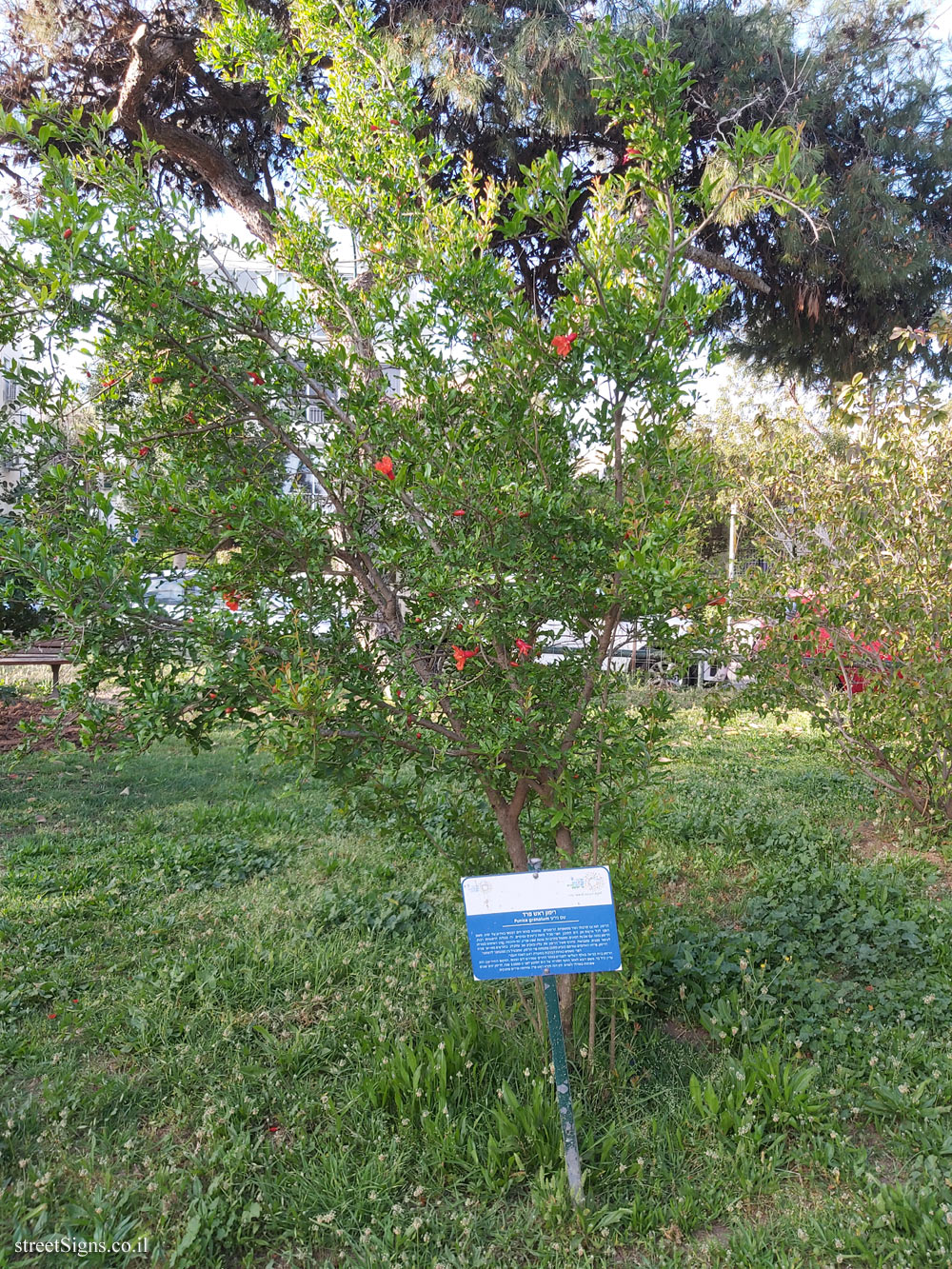The sign is part of the "Tel Aviv Orchard" in Hayarkon Park, an orchard of fruit trees from Israel and the world
 Click for sign's details
Click for sign's details The tree was photographed that day
 Click for a larger image
Click for a larger image The text on the sign is almost exactly the same as in another variety of pomegranate (Acre pomegranate), moreover, in the other sign, the last row of this sign was also copied, so that the two varieties appear in it
 Click for sign's details Translation of the text on the sign
Click for sign's details Translation of the text on the sign:
The logo of Tel Aviv-Jaffa - Ganai Yehoshua (Park Yehoshua Gardens)
Enjoy nature and stay in the city
The emblem of the city of Tel Aviv - Jaffa
Pomegranate (Mule head) Scientific name Punica granatum
The pomegranate is a deciduous cultural tree from the Punicaceae family, found in the Caspian Sea region of modern-day Iran, from where it was distributed to all Mediterranean countries. The fruit contains hundreds of juicy seeds, albeit many medicinal properties. The pomegranate is one of the "seven species"
*, and symbolizes in different cultures abundance and fertility, beauty and wisdom. It is commonly used in its form to decorate buildings, and coins. In winter the pomegranate leaves fall off and in spring the pomegranate blooms again. In May-June the pomegranate blooms. Its red flowers and the shape of a cup from which the pomegranate fruit develops, which ripens between September and December.
The fruit is used as one of the blessings at the Hebrew Rosh Hashanah meal.
The pomegranate was probably domesticated in the third millennium BC in the mountainous region south of the Caspian Sea, the only place where it still grows wild. From there it was brought to the east coast of the Mediterranean about 5,0000 years ago. Pomegranate has different varieties that have been developed over the years. This variety is called mule head, and its fruits are pink and sweet.
* "Seven species" - 7 types of plants mentioned in the Book of Deuteronomy, and which describe the agricultural abundance of the Land of Israel

 Click for sign's details
Click for sign's details  Click for a larger image
Click for a larger image  Click for sign's details
Click for sign's details